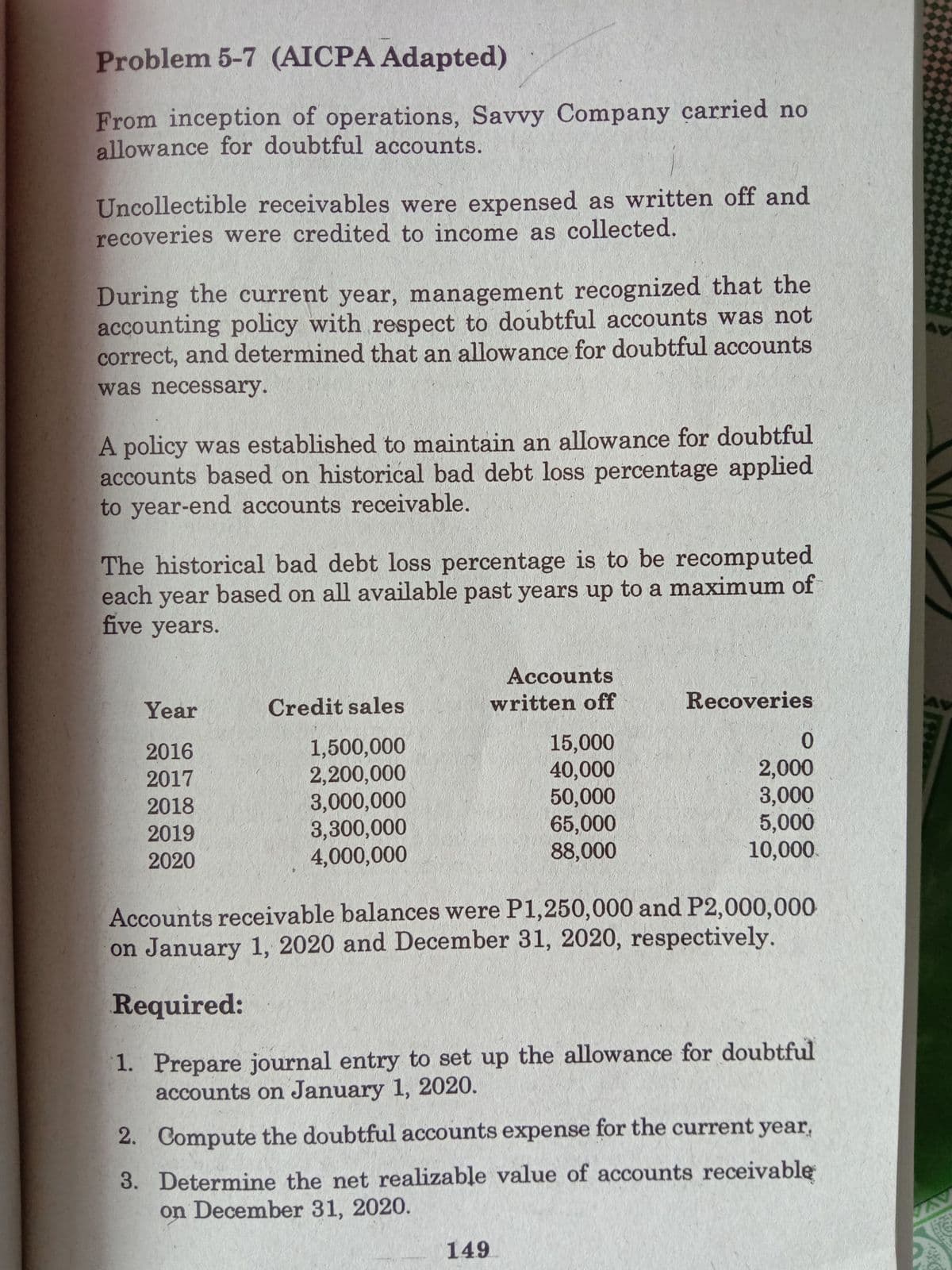Required: 1. Prepare journal entry to set up the allowance for doubtful accounts on January 1, 2020. 2. Compute the doubtful accounts expense for the current year, 3. Determine the net realizable value of accounts receivable on December 31, 2020.
Required: 1. Prepare journal entry to set up the allowance for doubtful accounts on January 1, 2020. 2. Compute the doubtful accounts expense for the current year, 3. Determine the net realizable value of accounts receivable on December 31, 2020.
Auditing: A Risk Based-Approach to Conducting a Quality Audit
10th Edition
ISBN:9781305080577
Author:Karla M Johnstone, Audrey A. Gramling, Larry E. Rittenberg
Publisher:Karla M Johnstone, Audrey A. Gramling, Larry E. Rittenberg
Chapter16: Advanced Topics Concerning Complex Auditing Judgments
Section: Chapter Questions
Problem 36RSCQ
Related questions
Question

Transcribed Image Text:Problem 5-7 (AICPA Adapted)
From inception of operations, Savvy Company carried no
allowance for doubtful accounts.
Uncollectible receivables were expensed as written off and
recoveries were credited to income as collected.
During the current year, management recognized that the
accounting policy with respect to doubtful accounts was not
correct, and determined that an allowance for doubtful accounts
was necessary.
A policy was established to maintain an allowance for doubtful
accounts based on historical bad debt loss percentage applied
to year-end accounts receivable.
The historical bad debt loss percentage is to be recomputed
each year based on all available past years up to a maximum of
five years.
Accounts
written off
Year
Credit sales
Recoveries
1,500,000
2,200,000
3,000,000
3,300,000
4,000,000
2016
15,000
40,000
50,000
65,000
88,000
2017
2,000
3,000
5,000
10,000
2018
2019
2020
Accounts receivable balances were P1,250,000 and P2,000,000
on January 1, 2020 and December 31, 2020, respectively.
Required:
1. Prepare journal entry to set up the allowance for doubtful
accounts on January 1, 2020.
2. Compute the doubtful accounts expense for the current year,
3. Determine the net realizable value of accounts receivable
on December 31, 2020.
AV
149
Expert Solution
This question has been solved!
Explore an expertly crafted, step-by-step solution for a thorough understanding of key concepts.
Step by step
Solved in 2 steps

Knowledge Booster
Learn more about
Need a deep-dive on the concept behind this application? Look no further. Learn more about this topic, accounting and related others by exploring similar questions and additional content below.Recommended textbooks for you

Auditing: A Risk Based-Approach to Conducting a Q…
Accounting
ISBN:
9781305080577
Author:
Karla M Johnstone, Audrey A. Gramling, Larry E. Rittenberg
Publisher:
South-Western College Pub

Auditing: A Risk Based-Approach to Conducting a Q…
Accounting
ISBN:
9781305080577
Author:
Karla M Johnstone, Audrey A. Gramling, Larry E. Rittenberg
Publisher:
South-Western College Pub